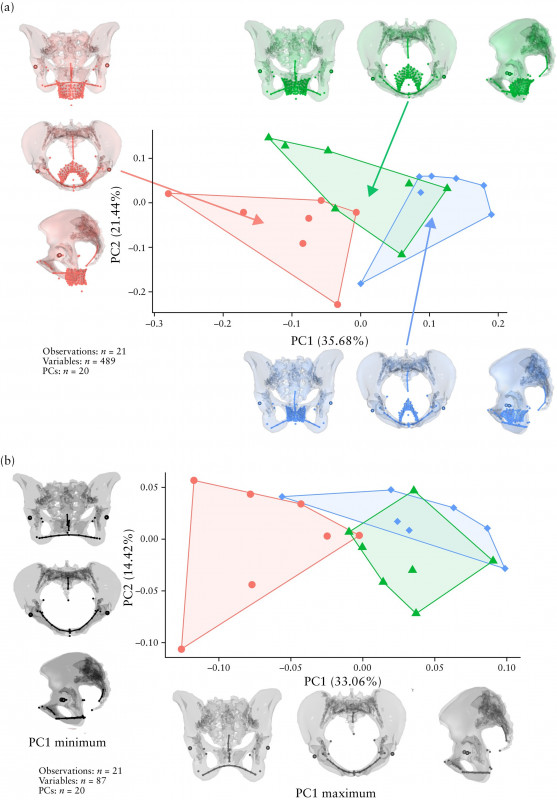News Details

Pelvic organ prolapse (POP) is a condition where one of the pelvic organs (vagina, uterus, bladder or rectum) bulge into or in severe cases out of the vagina. This condition is known to affect one in 10 women who have given birth and are over 50 years of age and it can severely affect the quality of life of the affected women. The proportion of women experiencing POP is expected to increase in the next few decades owing to increasing life expectancy.
A new clinical study by a team of researchers including Barbara Fischer (KLI Group Leader in Evolutionary Biology), and led by Katya Stansfield (University of Vienna), reveals that the shape of a woman’s pelvis may significantly influence her risk of developing postpartum pelvic organ prolapse. The research also highlights how the complex anatomy of the pelvic floor has so far not been fully captured by conventional linear measures.
The study, which was based on data from the University of Michigan, compared three groups of women: parous women with POP, parous women without POP symptoms, and nulliparous women. Using MRI scans of these women, the team analysed soft tissue as well as bony pelvis shapes in participants around age 50. The researchers found that the women with POP had a pelvic canal with a different shape: it was a more transversely oval compared to parous women with no POP symptoms. These anatomical differences were consistent in a smaller group of younger women in their 30s, suggesting that the findings apply across age groups. The results from this study have significant implications for prevention of POP through better risk assessment in preventive care.

